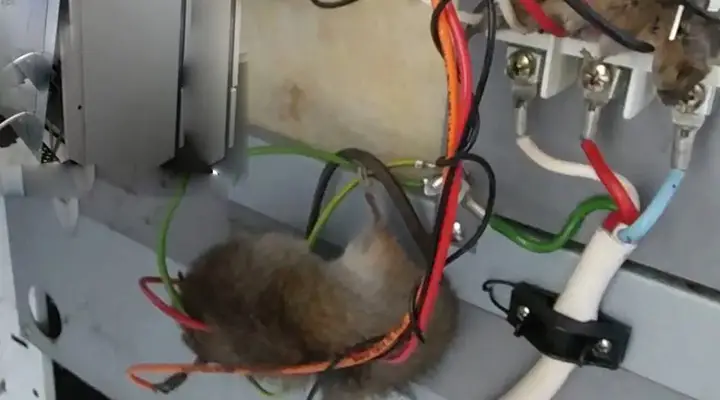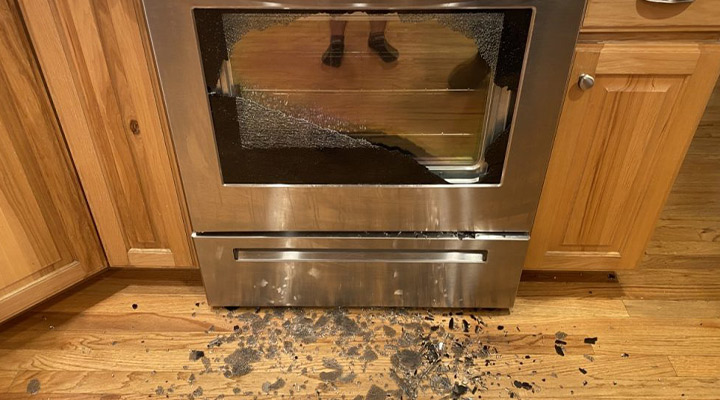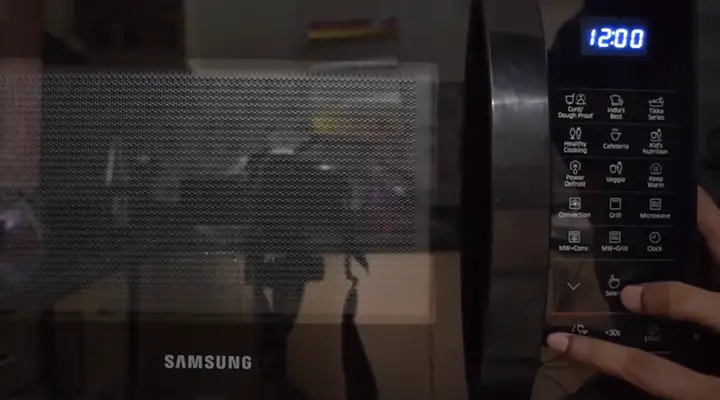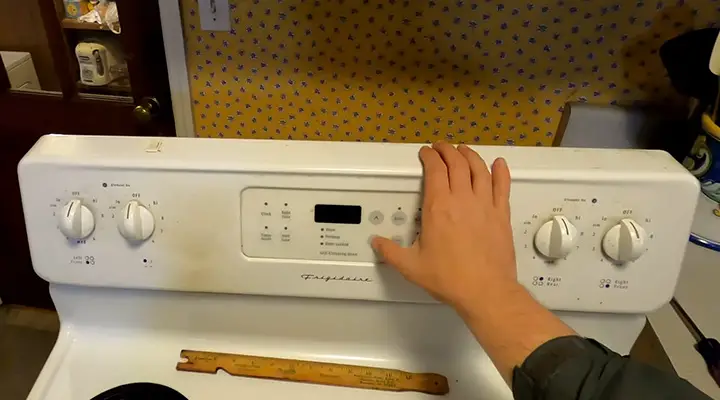How to Remove Baked on Carbon from Oven
Some of the most common ways and procedures of removing baked-on carbon from the oven are using bicarbonate and water, using a suitable carbon solvent, using baking soda, etc.
Cleaning the oven is required due to carbon buildup, but you don’t have to waste hours on your hands and knees. There are a few simple methods for getting rid of it.
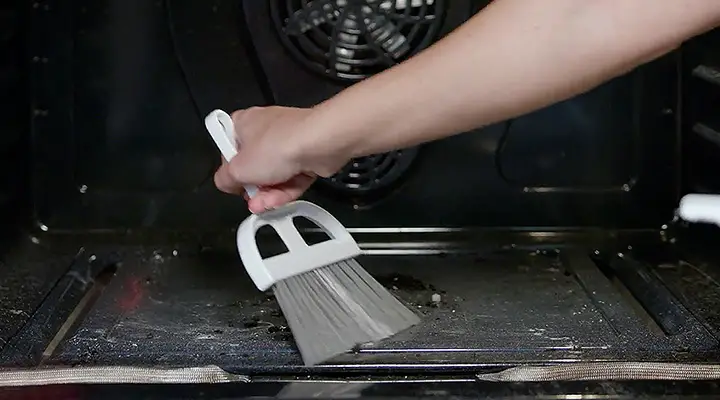
How to Remove Baked on Carbon from Oven
Baked-on carbon in your oven may give your baked goods, as well as your entire kitchen, a somewhat charred unappealing odor. Grease and other substances bake out all of their water over time, resulting in these deposits. As a result, the ultimate product is a black carbon crust that is firm and crispy.
Therefore, before you make your next dish, try this simple procedure for removing baked-on carbon.
1. If the oven is currently on, turn it off. Let the oven cool completely before attempting to remove the carbon.
2. To begin, you need to open the oven door. Take out the oven racks.
3. With the nylon brush, scrape away as much carbon and other debris from within the oven as possible.
4. In a container, combine the bicarbonate and water until it reaches the texture of a thick paste.
5. Using your hands, rub the paste into the carbon deposits in the oven. Let the mixture settle for at least 30 min on the baked-on carbon.
6. Using a wallpaper scraper or mud knife, remove the carbon underlying the paste. When carbon starts to stick to the end of your tool and obstruct your scraping, rinse it off.
7. If necessary, rinse any remains with sink water with a sponge.
Ready to remove baked-on carbon from your oven? Try those products and simplify the process today!
How Do You Dissolve a Carbon Burn
The ideal carbon-removal solvent is the one that can be used securely and effectively for the smallest amount of time. So, the solvents you’re considering should only be used to clean your paintwork, not to disintegrate it. You should read some information about a product before purchasing it.
After carefully scraping the carbon from the oven, wipe away any leftover carbon with solvent, smoothing rough places with fine steel wool. To remove stubborn deposits, rinse metal surfaces in water for up to 15 minutes. Moreover, if required, scrape again to dislodge tenacious grit. Then, using the solvent, thoroughly clean the area.
What Chemical Will Dissolve Carbon?
A carbon solvent is a chemical substance that can dissolve or suspend carbon. Acetone is the most well-known and widely used form of carbon solvent, with a solubility of 15 g/100 ml at 20°C (68°F) and miscibility in numerous organic liquids.
Furthermore, other forms include ethyl acetate, dimethyl sulfoxide, and others. Impurities in carbon, such as graphite or activated carbon, are extracted using carbon solvents.
Common Carbon Solvents
There are many carbon solvents available. Some of them are listed below:
Type 1: Acetone (CH3COCH3) – miscible in a wide range of organic liquids; rapidly evaporated; low toxicity; fumes can ignite a flash fire if exposed to flame.
Type 2: Ethyl Acetate (CH3COOCH2CH3) – extensively used in consumer items like nail polish remover and paint thinner; flammable with minimal toxicity.
Type 3: Dimethyl Sulfoxide (CH3)2SO – severe toxicity; high-boiling solvents commonly employed in laboratories to break down biological materials.
Type 4: Ethanol (CH3CH2OH) is a kind of alcohol that is miscible in a wide range of organic liquids and has low toxicity.
Type 5: Diethyl Ether (C2H5)2O – explosive; harmful when inhaled, ingested, or absorbed via the skin.
Type 6: Carbon Disulfide (CS2) – very poisonous and explosive.
Type 7: Methylene Chloride (CH2Cl2), type 7, is very flammable and has mild toxicity.
Best Solvents for Removing Carbon Burn
2 of the best solvents for removing carbon burn are listed below.
1. Carbon-off! Heavy Duty Carbon Remover (Liquid), 1 Quart, 1 Count
Formula
Detergent, sodium carbonate decahydrate (water softener), and sodium carbonate peroxyhydrate Because it’s non-toxic and biodegradable, it is safe to use on paint and metal.
Safety
If used as indicated, this substance will not damage any materials and may be securely disposed of with regular household garbage. It may also be diluted and sprayed as a cleaning.
Use of Application
Clean areas with a lot of carbon buildup with this product. For optimal results, use a brush or spray to apply it and then wipe it dry.
Required Time
Allow the solution to soak in and dissolve the carbon for several hours before cleaning it away.
Important Selling Points
Environmentally friendly, simple to use, degrades naturally, and may be sprayed.
This product works well for eliminating carbon buildup.

2. Cleaner/Degreaser
Formula
This cleaner contains a powerful solution that eliminates grease and other hard-to-remove filth without discoloring or harming surfaces. Because of the range of components, it is a powerful cleaner that can be used in almost any area, particularly those that have been exposed to a lot of oil and dirt.
Safety
When using this cleanser, use caution because some users have experienced adverse responses to the chemical compounds in the composition, such as dryness or irritation, following application.
Use of Application
With a cloth or a spray bottle, this cleanser is applied to surfaces. Depending on the desired outcome, it can be decreased for mild to heavy-duty applications. When this solution dries, it leaves no residue and fully cleans the surface, allowing you to move on to the next step of your cleansing procedure without trying to clean the surface again.
Required Time
This cleaner/degreaser should be applied and left to soak for a while before being properly rinsed with water to eliminate any visible residue. Depending on the amount of grime and oil to be removed, the solution might take anywhere from a few minutes to an hour to accomplish its magic.
Important Selling Points
It may be used to clean almost any surface, especially those that have been subjected to a lot of grease and oil.

Does Vinegar Remove Carbon?
Vinegar is not an effective way to remove carbon buildup. However, if you are looking for a home remedy, baking soda and water are a traditional method for cleaning the oven, especially if there is a lot of carbon build-up. Rather than cleaning for hours, this method allows you to gradually break down the stiff carbon.
Fill a spray bottle halfway with baking soda (about 2 to 3 teaspoons). Then, fill the bottle halfway with water and shake it thoroughly. Next, spray each bit of black carbon that you observe in your oven with the bottle. Allow the liquid to sink into the carbon before removing it.
Time of Carbon Removal
Repeat this procedure every time you use the oven, or at least a couple of times every day. When you find the mixture accumulating at the bottom of your oven, it’s time to remove the carbon. Wipe away all of the carbon, as well as any extra water and baking soda, with a moist towel.
However, keep in mind that baking soda must have time to break down the carbon.
Frequently Asked Questions
1. Does sodium hydroxide dissolve carbon?
NaOH alone will not suffice. You don’t need a nice odor, but the presence of additional components plays a vital function in making the combination thick and penetrating. The easiest approach to remove carbon deposits is to use a muffle furnace set to 550 degrees Celsius. On the other hand, salt and isopropanol could work.
2. How do you dissolve carbon black?
A blend of strong sulfuric acid and hydrogen peroxide is the finest technique to remove carbon black off anything. In laboratories, this is frequently employed (but also strongly discouraged because of the dangers involved) to clean sintered glass filters polluted with items like activated carbon.
Conclusion
You can use oven cleaners for this purpose as well. Whatever you do to clear the carbon burn, make sure you do so carefully and according to the manufacturer’s instructions. Because you are chemically trying to clean something that will be used to create food that you will consume.

